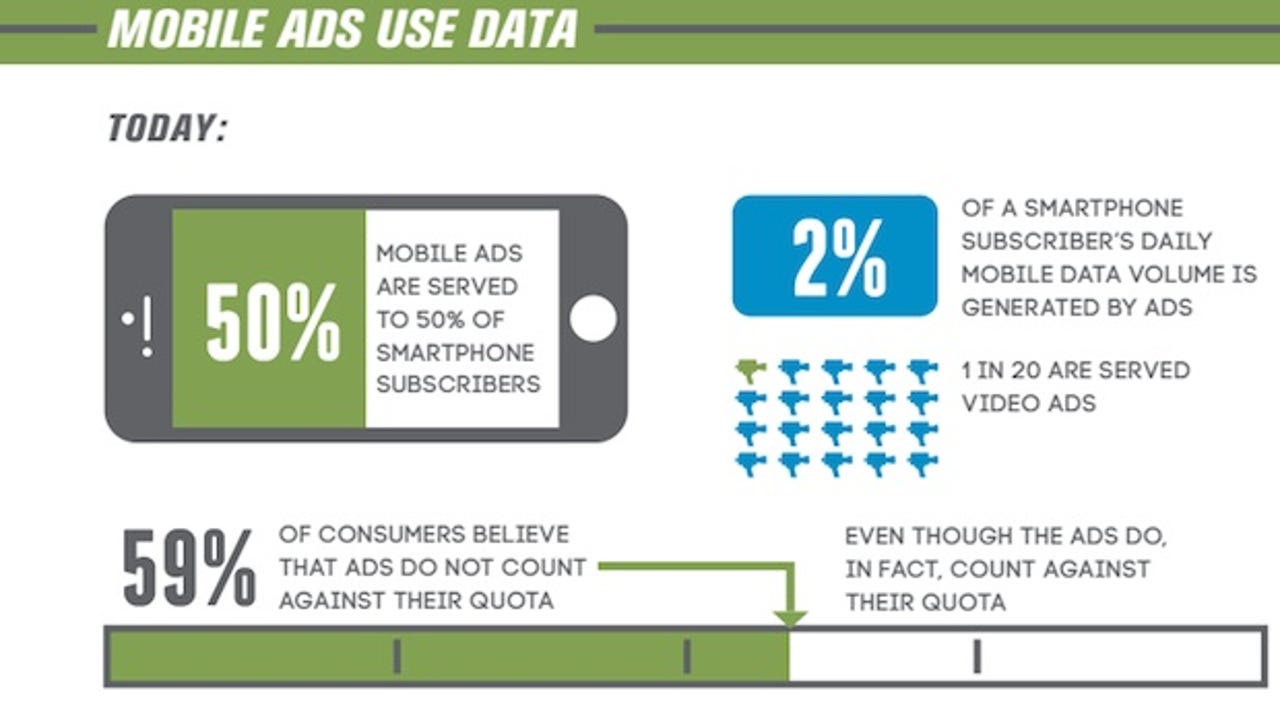Most consumers don't think mobile ads count against data quotas, says Citrix


The biggest emerging trends taking over mobile could boil down to these three: ads, video, and now wearables, based on the latest data from Citrix.
According to the mobile software company's latest quarterly Mobile Analytics Report published on Thursday, advertisement on mobile devices alone has doubled in reach in the last year alone.
More about wearable technology
If the past holiday season didn't offer enough evidence, the bottom line for advertisers and marketers, this is the platform not only to watch but to target now.
It's almost a win-win situation -- at least at this point in time -- for brands and consumers being that mobile ads were found to only generate less than two percent of a user’s daily mobile data volume with only one in 20 people seeing video ads.
With carriers such as AT&T pledging to offer businesses with the ability to sponsor mobile data to get their video ads out there, we'll likely see more growth around mobile video ads without any expense to the consumer. (At least not financially on monthly bills. Time and annoyance are other matters entirely.)
Of course, consumers should still be a little wary as AT&T's program, which was unveiled just back in January amid CES 2014. Citrix found that 59 percent of respondents think mobile ads don't count toward monthly data quotas, which isn't actually always the case.
Mark Davis, senior director of product marketing for service provider platforms at Citrix, explained in the report that that this report should serve as "an early warning system" for both mobile operators in marketing the realities of these situations, both in terms of customer service and strains on the network.
In many regions, consumers now expect wired-like performance on their mobile device and, when they don’t get that performance; their frustration is directed at the operator. But a great subscriber experience is just the start. Operators looking to transform their businesses need to understand data usage such as that detailed in the report, and find ways to translate that understanding into incremental revenue.
Video shared on social media such as Vine and Instagram, primarily between consumers but increasingly being tapped by retail and hospitality brands, has also seen a surge in the last year. That's not too much of a surprise given that Twitter bought Vine in late 2012 for an official debut in January 2013, while Facebook-owned Instagram only introduced video sharing on the photo app last summer.
Still, researchers asserted that video now accounts for 32 percent of all data on social networks, while images continue to hold the lead at 63 percent.
Text, meanwhile, only contributes five percent.
Gaming is also highlighted for its significant growth on mobile platforms, but arguably that one has been more of a mainstay prior to 2013. In Citrix's latest report, approximately 68 percent of respondents admitted they are "addicted" to at least one mobile game.
Finally, one of the most hotly anticipated trends expected to either exceed our wildest dreams or crash and burn this year is wearable technology.
If wearables do indeed go from fad to mainstay, it will be thanks to health and fitness apps. Citrix researchers defended that increased shipments for devices such as FitBit, Nike+, and Pebble, will both prolong this trend while also making a dent on overall network data traffic.
For reference, Citrix hired consumer brands market research firm Wakefield Research to conduct this study, which drew results from anonymously-sourced data traffic on the 3G and 4G networks of the Citrix global tier-one customer base.
Image via Citrix